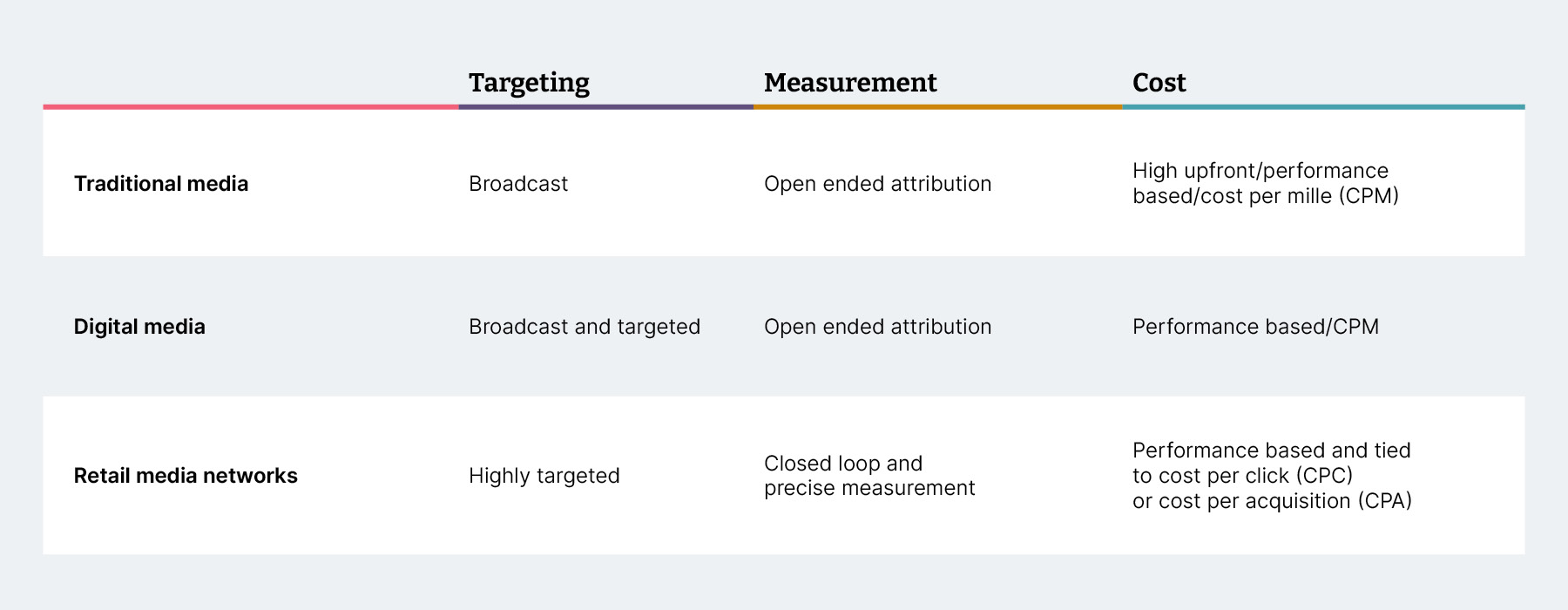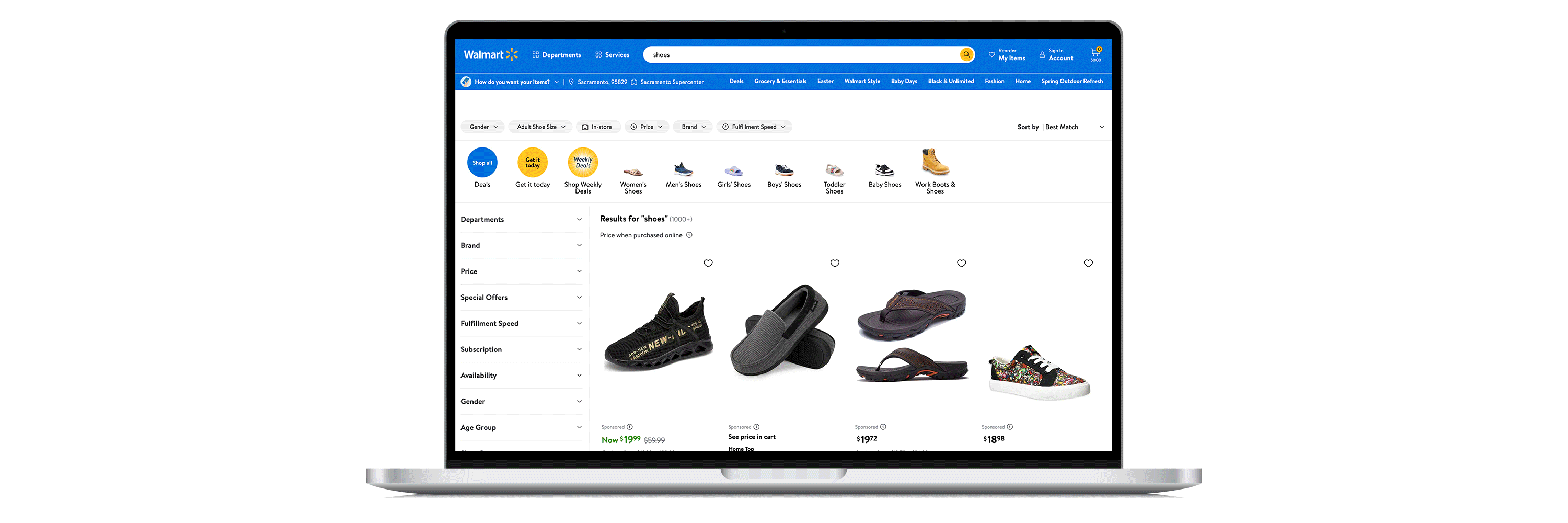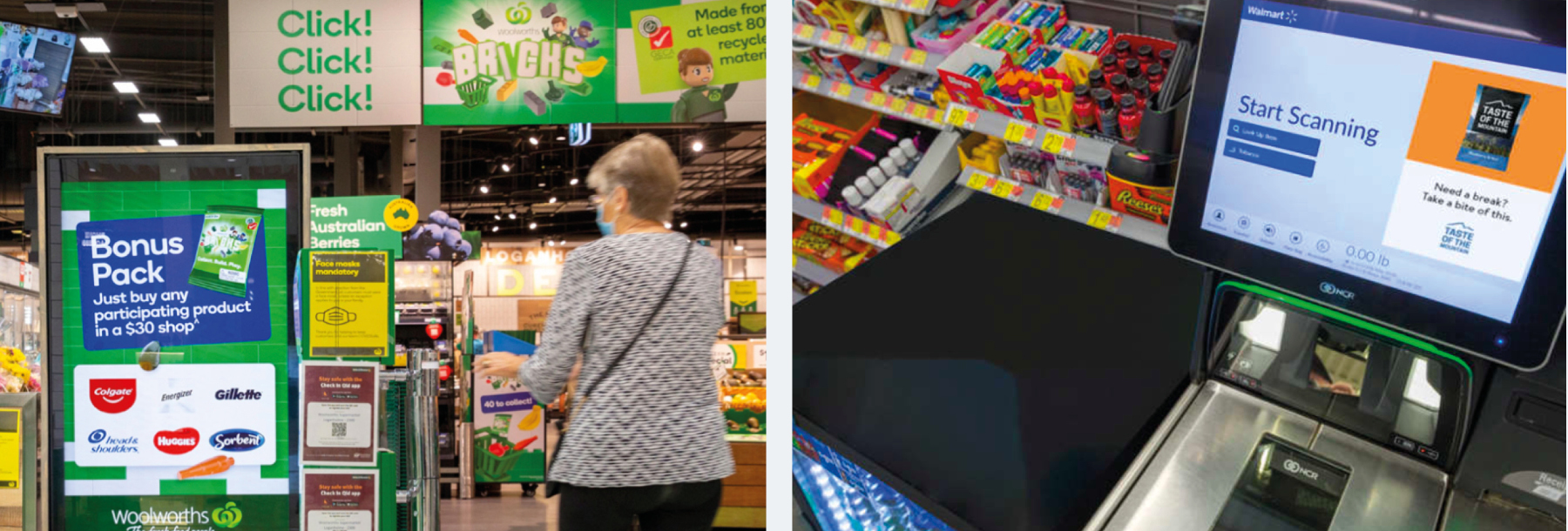Digital advertising is a field that changes quickly. Although established platforms remain firmly in control of the space, a decline in ad revenue for the likes of Google, Meta and X (the platform formerly known as Twitter) signals that change is afoot. One of these changes is the increasing prevalence of something called retail media networks (RMNs). This is where sellers and brands advertise on retailer-owned digital channels and properties rather than leveraging other digital and traditional ad platforms.
McKinsey claims that retail media networks are currently worth $45 billion and suggests the field is set to grow significantly in the next few years, estimating it will be worth $100 billion in three years.
What’s driving the growth of retail media networks?
There are several reasons why retail media networks are starting to be favored by brands. First, in a challenging economic context, the question of return on ad spend (ROAS) feels even more urgent. By leveraging retailer-owned media networks that enable advertising close to the point of purchase (when compared to, say, a social platform or search engine), it’s much easier to determine that the money spent is delivering a return. More specifically, RMNs allow for what the industry calls ‘closed loop measurement’ — tracking a customer's journey from seeing an ad to making a purchase. This can provide a comprehensive understanding of a given ad's impact on sales.
More broadly it gives brands greater control. Issues around reputation (which have become particularly problematic for advertisers on X), targeting and privacy can be much more effectively managed in a network that promises richer and direct access to first party data and insights, as retailers and marketplaces are closest to the customer.
The table below outlines some of the differences between traditional, digital and retail media. They vary in how they’re measured and how costs are managed.


To be clear, these approaches could be used together. One isn’t inherently better than another. However, retail media networks do afford better targeting and more transparency when it comes to measurement than other forms of advertising.
What does a retail media network actually look like?
Perhaps the best way to understand retail media networks is to simply look to the best example of one: Amazon. The company earned $37 billion in ad revenue in 2022 from its RMN. Of course, the scale of Amazon’s network is vast — that is key to its success — but at a fundamental level, it consists of a diverse range of sellers and brands choosing to advertise through Amazon, the platform on which their products are sold. This is precisely what is meant when we say that with RMNs advertising is located much closer to the point of purchase.
Amazon might appear like a curious example — it’s unique in that it has always been a marketplace or mediator. However, brands like Walmart and Target — more traditional retailers — are also using RMNs to great effect. It’s not only allowing them to build a new source of revenue, it’s also changing their relationship with partners and other brands. They’re essentially offering them a new way to connect with consumers too, making it possible for third parties to advertise on their digital properties and channels — be it on-site, off-site or at their omni-touchpoints — to the benefit of everyone.
It’s not just for retailers; if you operate in a marketplace model, a retail media network is an option worth exploring to drive new revenue if you have a significantly large traffic and engaged audience.


Onsite ads- sponsored products and sponsored brands on Amazon.com and Walmart.com


On-site display ads on Amazon.com, Target.com and Walmart mobile app


Offsite ads from Home Depot and Amazon


Omni ads at Woolworths and Walmart stores
How does a retail media network work?
So, it’s clear that retail media networks are an option for many different kinds of businesses - whether you are a multi-brand retailer or a marketplace or a food delivery app or a property marketplace. But how do they actually work? Although there are various ways they can be implemented, at their core a retail media network consists of an advertiser (the seller or brand), a publisher (the retailer or organization that owns the digital or physical point of purchase) and a technology platform that connects them.
A typical RMN might look like this:


There are numerous parts, but the most important are:
The demand-side platform, which serves advertising partners — i.e. brands, sellers and/or agencies. The demand side platform offers a self-service interface for partners to set up a campaign with ad copy, images, budget, bids, duration, products and other campaign conditions. It also allows them to access performance analytics on them.
The supply-side platform that helps retailers or publishers list, manage and scale their advertising offerings across thousands of brands. They can connect it to data on everything from inventory to customer behavior. It also pushes advertisements to the ad server, which delivers them to websites, mobile apps and loyalty apps.
- The ad exchange or bid engine is the heart of the network. It’s powered by algorithms that ensure the relevant adverts from the winning sellers are targeted at the relevant customers at the right time. The ad exchange enables bidding for these ads, maximizing revenue potential from the limited online real estate available with the retailer.
Implementing a retail media network
Adopting a retail media network can have a significant commercial impact and significantly impact your profitability. In fact, BCG estimates potential margins of up to 80% in this high-value revenue stream. But it isn’t something that you can just switch on and expect it to generate revenue. For RMNs to be effective, you need to make the right investments in critical capabilities. If you’re starting from scratch it’s important to have a launch plan across a period of a few months. Even if you have one in place, scaling can come with numerous challenges, so it’s also vital that you are mindful of how you expand your ad inventory and evolve your platform. What worked six months ago might not work in six months' time.
For example, while it might have made sense to launch something so you can hit the market quickly, you might find that a few months down the line that it doesn’t really provide your partners the level of control they need over the way they configure and target campaigns to audiences.
There are other questions to consider too, like:
Does it integrate with your current search implementation and provide the right degree of relevance?
Does the the bid engine provide the necessary transparency and explainability to you and your partners?
Does the solution meet the necessary privacy and consent requirements and secure data handling (given it will likely be dealing with sensitive customer data)?
Can you provide unified real-time reporting of campaign performance metrics, i.e. provide visibility on key metrics such as Return on Ad Spend(RoAS) and Advertising Cost of Sales(ACoS) for both demand side and supply side players ?
Do your technology choices give you the necessary scalability and are you able to evolve your ad inventory for partners?
From an operational perspective, do you have the right structures in place to scale and offer growth and support to your brand partners?
It's certainly a journey; a robust and successful retail media network can’t be built overnight. Ultimately, building trust and strong relationships with key partners is an effective way of ensuring that your RMN project continues to deliver value — for you and your brand and seller partners.
What next?
Calling retail media networks the future of advertising online is too on the nose — if the last few years have taught us anything, it’s that things change quickly in this space. However, waiting for the next thing is a missed opportunity: building a retail media network will ultimately provide you with a solid foundation to capitalize on the monetisation opportunity that’s presented by RMNs. Make sure you give yourself the best possible chance of seizing the opportunities that are out there.


















